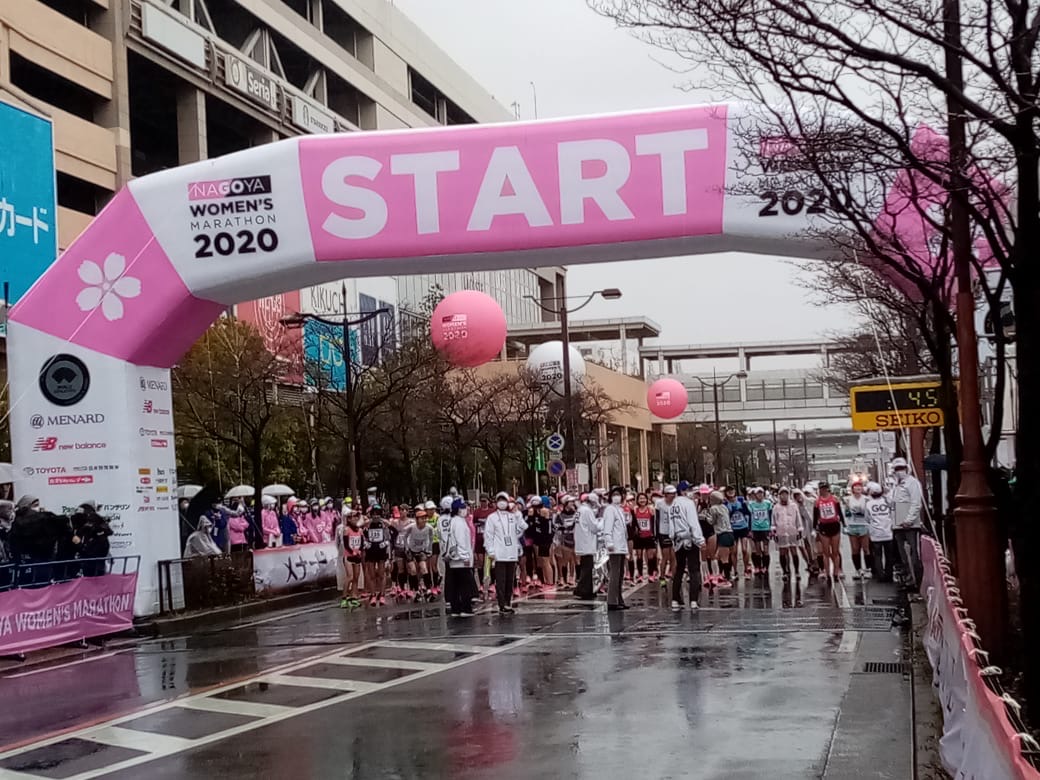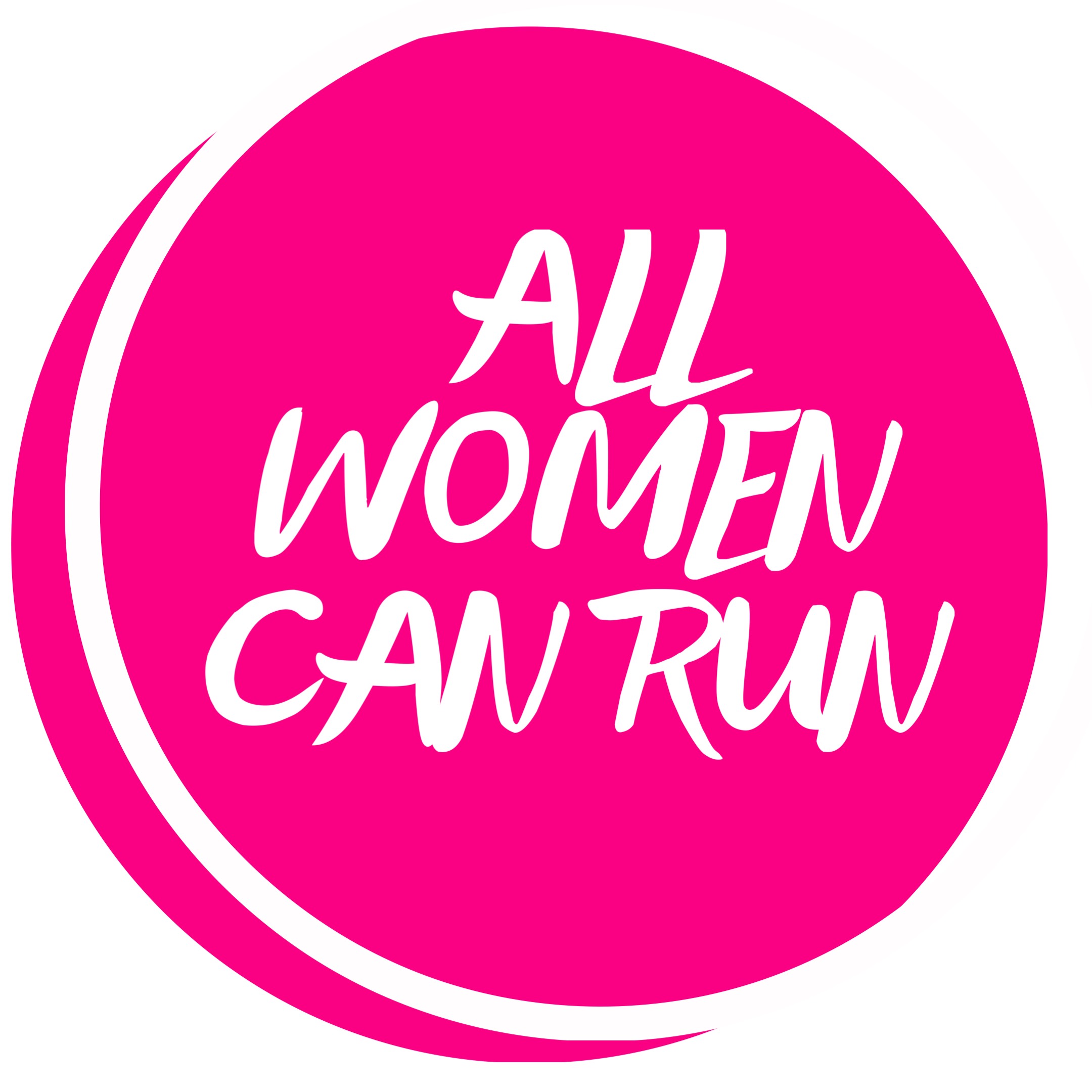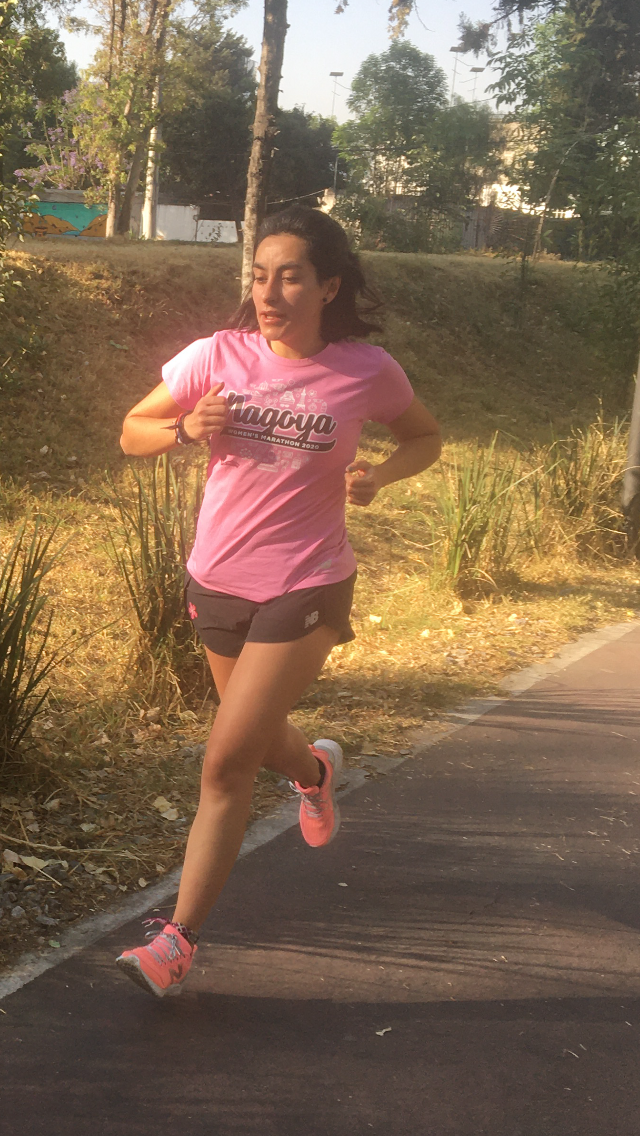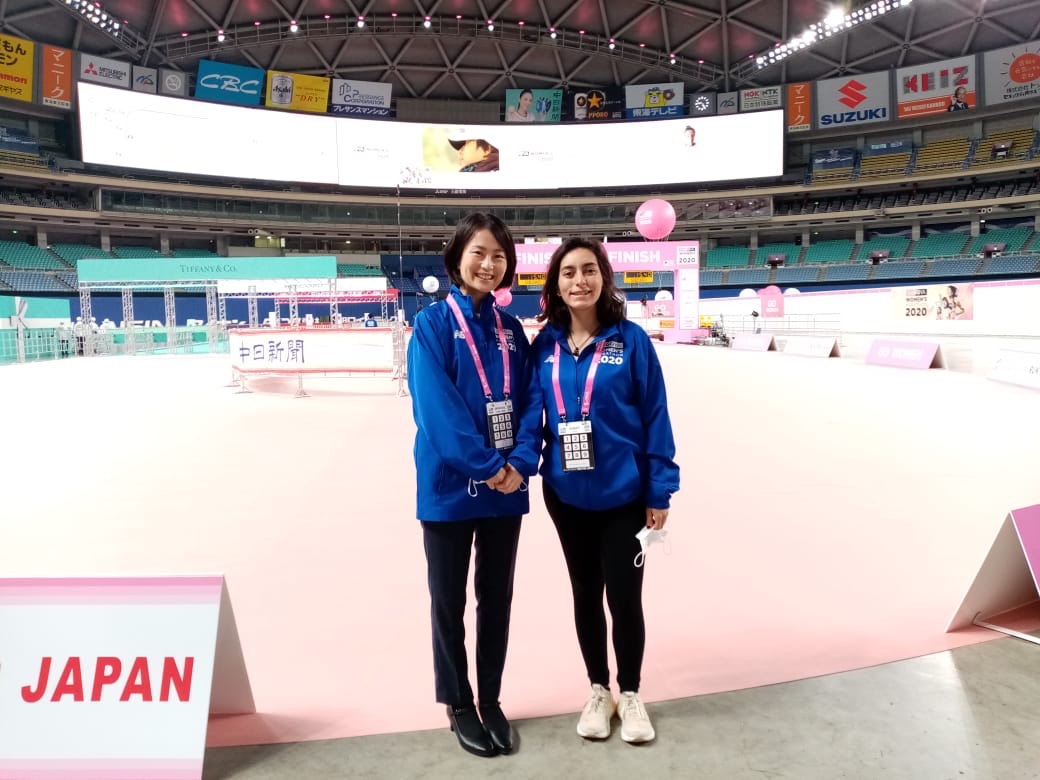Nagoya Women’s Maraton 2020
Nagoya Women's Marathon 2020: a race like I never imagined
- The biggest women-only marathon in the world…that became a virtual one.
- When destiny changes all plans and provides a lesson.
By Luisa Fernanda Flores Guzmán
Translation by Gabriel Guadalajara
The start of a new year always brings with it novelties and goals and 2020 seemed to promise a lot for everyone. The beginning of a new decade was a good reason to achieve dreams and finally accomplish all the resolutions made to ourselves in past years. But we never imagined that in Asia, America, Europe, and the rest of the world, we would be surprised by the same situation: the arrival of COVID-19.

A few weeks before my journey was to begin the coronavirus situation in China became serious. I received an email with the news that NWM 2020 would be cancelled for all regular participants. Only elite athletes would be able to race. The email also told me that the marathon would be carried out as an online event, a detail that did not catch my attention at that moment. I had to rethink: Would it be worth the effort to travel all the way to Nagoya for such a small-scale event? In the end I decided to go ahead with my earlier plan of visiting Nagoya and assisting in the now smaller marathon. I could not have made a better decision.
8 March 2020. After a storm, the sun comes out.
Although the marathon would be carried out virtually for most participants I still had to cover the elite race. On 8 March the streets of Nagoya were closed as planned to accommodate the 42.195 km route. But instead of 22,000women massing at the start line there were only 110 runners. A simple decorative arch stood over the starting and finishing lines with the race organisers and the press huddled around them. There did not seem much to cheer about. The marathon expo and most related activities had been cancelled and the event bore little resemblance to what it looked like on previous occasions. To top it all off, it was cold and raining: the kind of rain that is worse than a storm because it makes you think it won’t get you really wet but it just doesn’t stop and you end up soaked to the skin. The atmosphere was sad - not hopeful and completely different to what I had imagined.
I mention this because amidst all of these misfortunes, a record was set that day! Mao Ichiyama, 22 years old, ran 2:20:29: a new Japanese record for a women-only marathon. It is now clear to me that when the winner crossed the line, inside Nagoya Domo, the sun shone again. Thanks to Ichiyama’s effort, as well as that of the other participants, everybody smiled. I saw many people who could not contain tears of joy. This was the start of positive emotions, of a year that would become unforgettable for NWM and I can say that further joy was in its way.
28 March – 26 April 2020. GO Women! … let’s finish what we started.
One by one the great sports events planned around the world for 2020, including the Olympics, has to be cancelled due to the worldwide emergency. This has brought frustration for countless athletes around the globe. After months or even years of training a situation that is beyond anyone’s control changed everybody’s plans. Many runners like me felt a huge disappointment.
Tetsuo “Teddy” Okamura, director of the NWM, had the “crazy” idea of staging the marathon as an online event. In this way the 22,000 participants would have the opportunity to complete the race anywhere in the world, even without leaving their homes. Saki Mitsuda, who is part of the organising team, told us that even though it had seemed impossible the team managed to organise the online race in just two weeks.
NWM’s director saw the online marathon as a way to offer an alternative to all the women who had been training for the race for so many months as well as being able to receive the much-coveted Tiffany pendant (awarded to finishers instead of a medal). It had to be earned by completing the 42.195 km distance either in one run or in four parts of 10.55km each.
This solution was made possible through a mobile app in which runners would register their competitor number, then choose whether to complete the race as a one-off or in four equal stages on different days. The four-stage option was offered because, even though it makes the challenge easier, it is not easy to find a 42km-long circuit to run freely. Competitors had almost two months to complete the race, with each participant able to choose where they ran according to their own choice and the safety measures in force within their country of residence. In countries observing a complete ‘lockdown’ the challenge could be done on a treadmill.
At first I was not convinced by the idea but carried on with it regardless. I gradually discovered that this version of the marathon not only gave us the chance to earn a Tiffany pendant but it also gifted us with something more valuable: the motivation and cheer that we need during the harsh days we have gone through in this pandemic. Saki Mitsuda said it herself, that this was indeed a very special year for NWM, a year they will never forget. It was the same for me, and although I completed the marathon in four parts and over the course of four weeks I felt part of something and it is an experience I will never forget.
I came back to Mexico with the objective of running the marathon I had left uncompleted. I wanted to run across different routes, both where I live in Ciudad Satéite and in different parks around Mexico City. But this was not possible because of the social distancing requirements. I opted instead for the same routes I had used for my training.
On 28 March I ran the first 10.55 km and, although it felt just like any other training session, I was in a true competition. More than ever I was in a race against myself. There were no other competitors to get ahead of but I did have to reach my own time goals. On the run I imagined myself surrounded by thousands of other runners and discovering the great avenues and peculiar sights of Nagoya. As in any other race I had difficult moments to overcome.

Regardless of the small obstacles I encountered the thought of how much work was put into making the virtual marathon available so promptly motivated me. I also drew strength from imagining the thousands of women around the world who were taking the same steps as me to demonstrate to ourselves that even if the world had taken a 360° turn, we could finish what we had started.
All of us who run know that hundreds of thoughts cross our minds while we do so. I wish to share with you the lesson I am left with after this ‘virtual’ experience.
I completed the marathon on the streets of my neighborhood, the place that has seen me grow up. I got to do it during a marvellous time of the year. With the coming of spring I was able to enjoy the jacarandas that were blooming in Mexico, which in some way reminded me of Japanese cherry trees that were blooming on the other side of the world. I am certain that a young Japanese woman was taking pleasure in watching the blooming trees while completing the NWM, just like I was with the jacarandas. This is a small example of how, despite distance, nature, sport and the pride of being women provides us with a common feeling.
I am very grateful for the opportunity of being part of NWM 2020. We are currently going through a period when we should stay home, but we constantly face challenges and personal crises. We always need a source of motivation, which in our case is running, running and finishing this marathon that kept us focused and engaged for many weeks.
Maybe we will always need an online marathon. Times are changing and I have no proof yet no doubt that this could be the start of something new for the world of running. Of course, although NWM2020 was memorable I cannot wait to experience the real thing. I am sure that in 2021 the Nagoya Women’s Marathon’s tenth anniversary, will be an authentic blast.
I say goodbye expressing special gratitude to director Teddy Okamura, Saki Mitsuda, and the whole organizing crew of NWM, for their enormous and unique efforts that made this possible. And to my father, who was by my side all along the 42,195 km and has been my instructor on the exciting path of running.



